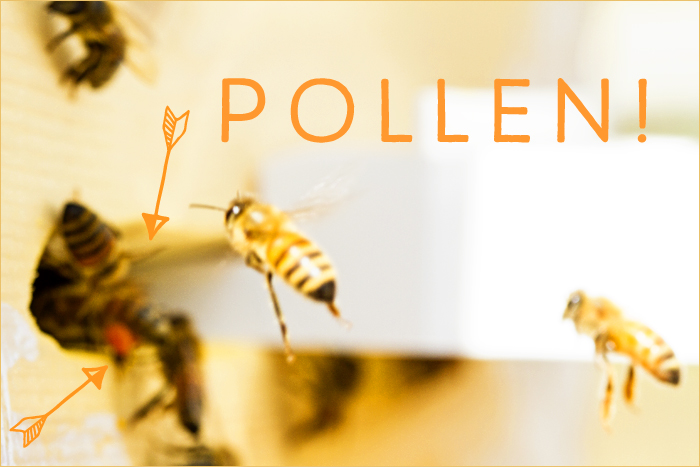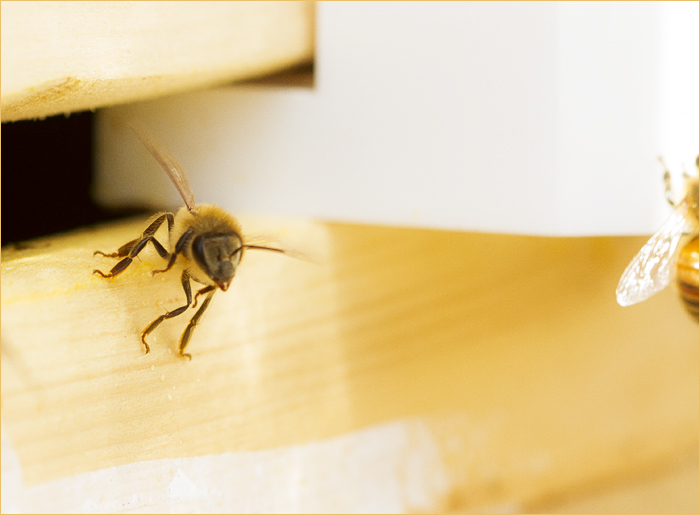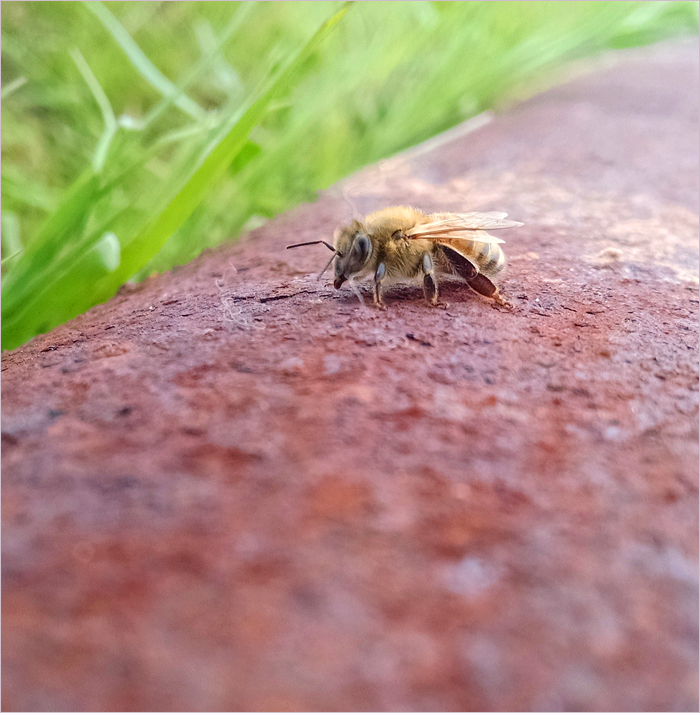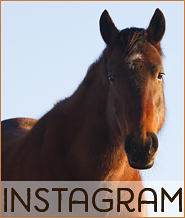To Bee III
I’d been told beekeeping goes from hobby to obsession very quickly, and though I heard this numerous times from numerous people, I remained skeptical. Obsession? I assumed hyperbole.
Well, let me add my voice to the chorus:
O B S E S S E D !
I am obsessed with my bees, with all bees, and will do anything and everything I can to encourage others to become bee guardians, too.
I have a top bar hive, so I can only speak on that – I have no experience with Langstroth hives (the boxes) or Flow hives. Top bar hives mimic a hollow tree or other cavity that wild bees would naturally make their home. Put simply, Langstroth hives were designed to prioritize the beekeeper’s time and profits, and top bar hives prioritize the bees, giving them a home quite similar to what they would look for in the wild. It’s also much cheaper to get into beekeeping with a top bar hive – materials to build my hive cost $28 (even if you hired someone to build your hive [free plans are numerous online], it can be built in a day), and there’s no need to buy extra equipment like plastic comb foundation or a centrifugal spinner to harvest honey. To harvest top bar hive honey, you just cut a honey-filled comb off the top bar, crush it into cheese cloth over a bowl, and let the honey strain from the comb.
Speaking of honey: I am doing this for the bees, not the honey. I will harvest very little, if any, honey this summer. My bees are starting from scratch – they must build all their comb, plus expand their colony numbers, plus make honey stores to last the winter. Even in established hives, you just take surplus honey and leave them plenty to eat all winter and into the spring. Beekeepers get less honey from a top bar hive than a Langstroth hive, but more beeswax.
I have wanted to get bees for years but always put it off because I didn’t feel I had the time to take it on. Turns out, the bees really don’t need much of your time – in a top bar hive, they get on just fine without you! Bees have been living strong, happy lives in the wild for a very long time. I think a person could get a top bar hive, have a local beekeeper install the bees, and never touch it again. Like a birdhouse: no one pokes around in a birdhouse, they just provide a safe, cozy house for a bird. But, it also turns out, you MAKE time. Thousands of tiny seductresses lure you back and back again. It’s shockingly easy to make time for the bees. See: obsession.
I’ve also been pondering where people might set up community hive yards in suburban and urban areas, when having backyard or rooftop hive might not be feasible due to space, neighbors, or zoning. (A hive yard is a designated area for multiple bee hives, just as a stack yard is a designated area for haystacks.) Placing a community hive yard in public parks and gardens might not go over well with the general population. I must credit Mike with this brilliant idea: place community bee yards in the back of cemeteries!
Mike has an epic fear of bees but he, too, has fallen in love with my bees and is eager for me to get more. He hasn’t been in the hive with me, or even very close, but is taking baby steps to spend time with the bees and wants to build a bunch of hives.
Going back to bee fear – that’s big for some people. Bees have different temperaments, and it really depends on the genetics of the queen and the drone with whom the queen mated whether you have gentle bees or grouchy bees. Therefore, it matters where you get your queen – I got mine from local bee guys with a great reputation, and my bees are calm and gentle. They deserve respect, but not fear. Bees ask you to get calm and centered and to stay calm and centered. And to just slow down when you are with them. Zen and the art of beekeeping…..
Going into a beehive is like entering another world, another realm, and having a local bee mentor is so beneficial. Being able to shadow an experienced beekeeper diffuses all the giant question marks. My friend Carol let me tag along when she worked her hives last fall, and I credit an enormous percentage of my budding knowledge and success to her willingness to share her knowledge and success with me.
“In the hive” means taking the lid off the hive and lifting the bars out to check for the queen, for eggs (if you don’t see the queen but see eggs, you know your queen was A-OK three days prior), for cross-comb, to add room, etc. My hive has a false wall right now, about a third of the way back, so the colony is not overwhelmed by too much space and can regulate the temperature more easily. I’ve moved the false wall back once, and will move it again the next time I’m in the hive.
I’ve never used smoke with my bees; I don’t even have a smoker. Since Wyoming can be so incredibly vulnerable to fire in the summer, I wanted to be sure I could work with my bees without being dependent on a smoker. But this can be another layer of protection against bee fear.
Going into the hive disrupts the bees and I have to force myself not to do it as often as I want to. Right now I go into the hive about every two weeks, but I visit them and sit outside the hive with them and watch them fly in and out and listen to them through the walls much more often. My next hive will have a viewing window!!
I saw capped drone cells earlier in May, and saw a number of drones walking around the combs when I checked in on the bees over the weekend. This is proof my bees are feeling strong and confident. Drones are male bees (and they have no stinger). They don’t help out in the hive – they are not worker bees – and they will eventually fly off with the goal of mating with virgin queens that might be in the area. Even though drones are a drain on colony resources (honey, cells, care, etc), bees like raising drones in the spring. [edited to add: worker bees decide when and whether to raise drones (and queens, for that matter) – the male/female aspect not determined by chance as it is with mammals, it’s a calculated decision made ahead of time.] If one of these drones mates with a wild virgin queen, the genetics of this hive live on, elsewhere. If hives didn’t produce drones, there would be no males to mate with virgin queens and all bees would eventually die off. So, my colony is giving a lot of energy and resources to raising these drones, with no direct benefit in return, but they do it for the greater good. WE HAVE SO MUCH TO LEARN FROM BEES.
Les Crowder, bonafide bee whisperer, has a wonderful little book called Top-Bar Beekeeping that I highly recommend, even if you’re not going to become a beekeeper and just want to learn more about bees and how you can support them. Even if you can’t keep a hive, there are many other ways to support the bees. We all make agricultural choices every day, even if we don’t realize it: FOOD = AGRICULTURE and FOOD = MONEY. Every time we buy food, we fund the agricultural practices that produced the food we just bought. Buying organic whenever possible is such an important part of being a bee guardian, especially organic meat and dairy! Corn is the primary staple of conventional feedlot and factory farmed meat and dairy, and corn is by far the biggest culprit when it comes to neonicotinoid pesticides, which are linked with Colony Collapse Disorder, which is decimating the bee population. As Les Crowder writes, “Bees are like the canary in the coal mine, letting us know our environment has become too poisonous.”
May I take a moment to rant? Why is it normal for people in the US to spend $40,000 on a car on credit (with interest and full coverage insurance on top of that), but then buy the cheapest food they can find? It’s so backwards! Spend less than $10,000 on a car and $10+/lb on meat and cheese and I’m willing to bet those same people would come out ahead in health and happiness… and financially. (And if you’re in the market for organically, ethically, humanely raised meat, may I direct you to Star Brand Beef – there’s just a few weeks left to order for July and August delivery.)
Anyway. I have been thinking so much about bees and mycelium and humanity. Our potential (ours as humans – the bees and mycelium are already honorably living up to theirs). How much we must remember and relearn. How diligent we must be in all our choices, because every single choice we make is linked with everything, everywhere.
To Bee, Continued
This is my hive.
I have it in a beautiful sheltered nook at my neighbors’, inside an abandoned stock rack (that big metal thing, which is designed to go in the bed of a pickup so you can carry your horse around in your truck). The stock rack keeps the large four-legged beasts (cows, horses, sheep, donkey, etc) from rubbing on the hive, and it’s at my neighbors’ because look at this place! It’s an ideal location for bees, better than anywhere I had at home – secluded, protected from wind, next to meadows and flowering trees.
Not a bad place to bee.
The weather has been nuts here – chilly and rainy since March – but Sunday was gorgeous and warm so I checked on my bees. They have three large combs built already! Some of the cells hold the liquid beginnings of what will be honey, and some of the cells hold eggs!
I even saw my queen, which was incredibly thrilling and occurred five seconds after I asked myself “how does anyone ever see their queen amongst all these bees??!” The queen has a much longer body than the worker bees, and she is the only one who has a shiny black back – worker bees have fuzzy backs. My queen is very dark; her body looks like polished mahogany. I was so happy to see her!
Bee photography has a learning curve.
To Bee!
The Farmily grew by ten thousand members this weekend. I became a bee guardian, initiate bee priestess.
Mike and I built a top bar hive, and I introduced the bees to their new home on Sunday. It was intense. It was a totally psychedelic experience. I laughed out loud, I cried, I felt the truth of the universe. I watched a bee dance, I watched a bee die. I got sick of wearing gloves so I took them off, and a bee landed on my hand, and bathed herself. Bees wash their faces like cats, with their front feet and tongue, did you know that? I did not know that, until I watched it happen on my forefinger, inches from my face.
They say not to open the hive for three days, to give the bees time to settle in without disruption. It has been so hard not to open the top and peek in! I resist, and I sit by the entrance and watch the bees fly in and out. They are carrying pollen in, which apparently means the queen is alive and all is well. I listen to the walls of the hive with my stethoscope and it is BUZZING in there. Another good sign. Tomorrow afternoon, I shall peek in.












